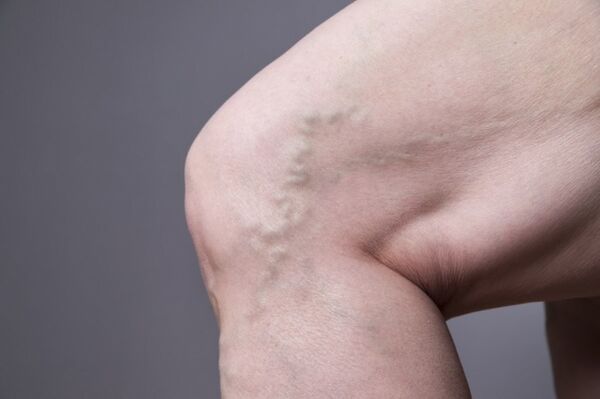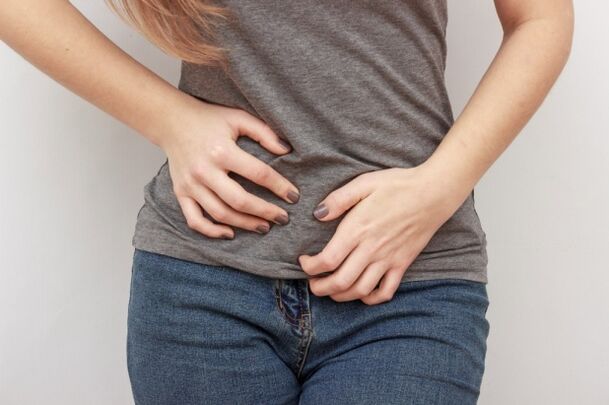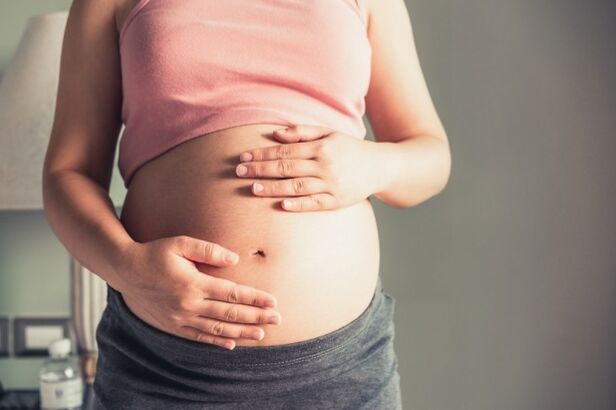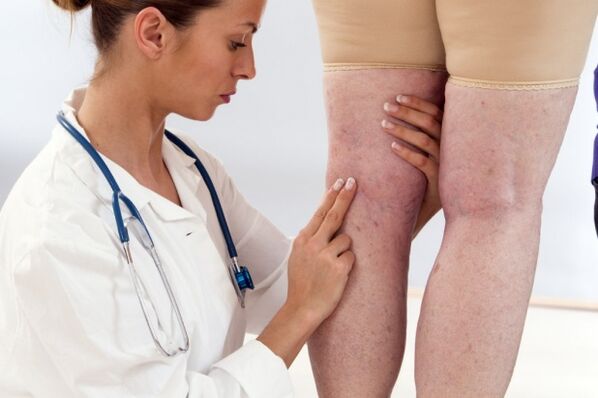Chronic venous insufficiency and varicose veins are widespread diseases: according to statistics, every third person in developed countries is confronted with them.A special risk group includes representatives of fair sex, for whom this pathology causes both physical and psychological discomfort.In this article we will look at why women are vascular diseases, what are their signs and symptoms and what to do to treat and prevent this disease.
Different veins: causes of varicose veins in women
If you think the statistics are less likely to suffer from varicose veins than women whose vascular disease is 1.5 times more common.What determines the gender characteristics of this pathology?

- Characteristics of hormonal levels.During the monthly cycle, the hormonal levels of the woman undergo fluctuations and during pregnancy, childbirth, lactation and menopause, these changes become even more significant.The ratio of female sex hormones (estrogen and progesterone) has a direct effect on the condition of the vascular walls and the viscosity of the blood.
- Hormonal therapy.Hormone replacement therapy and the use of combined oral contraceptives lead to changes in hormonal levels, thereby provoking a change in the ratio of estrogen and progesterone in the body.
- Wearing high heels and tight pants.Uncomfortable shoes, narrow linen and jeans - all this causes impaired blood flow to the lower limbs and pelvis, leading to the development of varicose veins.
In addition to these extremely female prerequisites for the development of pathology, varicose veins in women can be provoked by the following factors:
- Genetically definitely predisposition.According to statistics, there is a tendency for varicose veins in 60% of cases if one of the parents suffers from this pathology.
- Significant excess weight.Obesity is one of the factors in the development of varicose veins as the lower limbs experience high pressure.
- Excessive tension on the legs.If you are a professional runner, jumper or PowerLifter, favorable conditions for the development of vein problems are created.
- Poor circulation caused by a fixed posture.If you spend the bigger part of the day sitting or standing, this is a serious prerequisite for the development of vein disease.
- Unstable nutrition.Diet, poor fiber, vitamins and trace elements lead to disorders that affect the walls of blood vessels and blood composition.In addition, an unbalanced diet can cause constipation, which are also able to lead to changes in the veins - more special to the varicose veins of the pelvis.
- Diseases of endocrine and cardiovascular systems.Endocrine disorders cause changes in the hormonal background, which in turn becomes prerequisites for the development of varicose veins.Cardiovascular pathologies (in particular hypertension) also cause the development of vein problems.

Varicose veins of the pelvic veins in women
Pathological expansion of pelvic vessels is a common problem that faces 15-25% of women of reproductive age.This disease is often misled by infectious and inflammatory processes that are located in the reproductive organs of the female geniturine system.Inappropriate diagnosis is prescribed inappropriate treatment and the patient does not receive relief.Therefore, the problem of diagnosis and adequate therapy for pelvic varicose veins is an emergency problem of modern phlebology and gynecology.
The blood supply of the pelvic organs occurs due to the uterine and ovarian veins, as well as of the venous plexus-utarin-vaginal, bubbles-vaginal, fearsome, plexus of the rectum, etc.The reason for the pelvic varicose veins in women is to disrupt the blood flow in these vessels.Usually caused by stagnation of blood, which may be due to the following premises:
- Sitting lifestyles;
- they were transferred to gynecological diseases;
- disorders of the hormonal background (more special - high estrogen level);
- History of pregnancy and childbirth;
- Congenital and acquired connective tissue disorders (namely the disadvantage of collagen).
The opinion is an expert feature of this vein disease in women is the presence of chronic pelvic pain syndrome.It is represented by pain in the lower abdomen, radiating in the pubic area, sacrum and crotch.
The tip of pain usually falls on the second half of the menstrual cycle, complemented by severe premenstrual syndrome and dysmenorrhea.Psychosomatic disorders can join the mentioned symptoms.

As noted above, the diagnosis of pathology is complicated by the fact that the symptoms of this vein disease in women can be misinterpreted as signs of purely gynecological problems.Therefore, to make a correct diagnosis, transvaginal ultrasound, Dopplerography, phlebography and in some cases diagnostic laparoscopy will be required.
Both conservative and surgical approaches are used to treat varicose veins of the small pelvis.
In the first case, the purpose of therapy is to increase the tone of the venous walls, to normalize the nature of the blood flow and the viscosity of the blood.In order to solve these problems, patients are prescribed venotonics, hirudotherapy, ultrasound and magnetic therapy sessions, as well as exercise for exercise.If conservative therapy for this disease of the pelvic vessels is ineffective, surgery is performed - sclerotherapy or vein embolization in pregnant women.
Vein problems in pregnant women
Varicose veins are a problem for most pregnant women.It is caused by changes that occur in the body of the expectant mother during pregnancy.During this period there is a complete restructuring of hormonal levels, which is directly related to the condition of the blood vessels.For example, the increase in estrogen leads to changes in the structure of the muscle layer of the venous walls and the enlargement of the blood vessels.

In addition to the hormonal changes accompanying the period of pregnancy and childbirth, pregnancy and childbirth are able to provoke the development of veins diseases in pregnant women and for other reasons.First, it is an increase in body weight and the concomitant growth of the load on the lower limbs, as well as the excessive tension that the woman in labor experiences during contractions.
During pregnancy, there is an increase in the total volume of circulating blood, which occurs due to plasma growth and red blood cells.
Venus Diseases in Women: Symptoms and Signs
Depending on the stage of development, varicose veins on the legs are manifested in different ways:
- The initial stage of the pathological process is easy not to notice, as its manifestations are usually minimal.Small vascular stars appear on the legs, there is a slight feeling of discomfort in the evening, and by the end of the day there may be a slight swelling.Even if the clinical picture described does not cause much anxiety as soon as you have these symptoms, it is recommended that you consult a doctor.
- If the disease is not detected at the initial stage and treatment has not started on time, women problems in women worsen.The venous network is becoming more pronounced, characteristic nodes and cords are clearly visible under the skin, swelling and a feeling of fullness in the lower limbs causes serious discomfort.
- If the disease is not treated or treated ineffectively, it becomes advanced.The affected veins stand out heavily under the skin, there is constant swelling, cramps appear at night, skin in the legs can change color and cover with trophic ulcers.
Vein Diseases in Women: Treatment
There are two main approaches to solving this problem: conservative and surgical.The first of these is usually used in the initial stages of the development of the pathology, while the second is justified to combat later stages of the disease.

Conservative therapy includes medication, using topical products, visiting physical therapy sessions, wearing compression socks, regulating physical activity, daily routine, diet and drinking regimen.In addition, you can use additional products to combat varicose veins - such as Normaven® foot cream.Its regular application to the lower limbs helps to get rid of swelling, fatigue, heaviness and discomfort in the legs, disappear of night spasms and reduce the weight of the vascular model.
Due to its natural composition, the cream can also be used during pregnancy.
Surgery is aimed at complete or partial removal of varicose veins.Modern vascular surgery can offer the following types of operations:
- Combined phlebectomy.
- Laser coagulation.
- Radio frequency coagulation.
- Sclerosis.
As for the treatment of vein diseases in women aged 50-60 and in older patients, surgery is not usually performed as it is stressful for the body.























